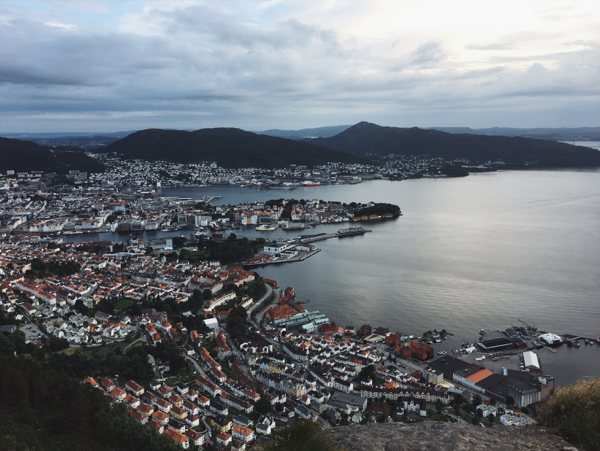Nature and geography have different effects on society here in Norway than in Finland. In Finland they act more like a canvas, a backdrop, in front of which we go by our daily lives. Don’t get me wrong, I think we’ve got plenty of beautiful nature back in Finland, but I’ve come to realize that in Norway nature takes on a more prominent role. It affects people’s experiences more directly. Driving from your home to visit your grandma can involve a long wait for the ferry to cross a fjord, or driving up a steep road filled with hairpin turns over a mountain. Local dialects have up until modern times remained stronger, as villages were more isolated due to the geography. Trains are not as popular as in Finland, rather there’s an extensive domestic network of airports, and an airline dedicated to serving small rural towns across the country. Nature restricts, puts a frame around what’s possible and feasible. But at the same time it rewards, it gives back a lot. I’ve noticed that people don’t discuss favourite gym classes as much as they compare favourite mountain hikes. Here in Bergen, the “byfjellen” (literally city mountains) surrounding the city are filled with trail runners, hikers young and old, and families with their children.

On top of Sandviksfjellet.
The popularity of mountain hikes makes me think of the Italian sociologist Roberta Sassatelli, who has written extensively on the topic of fitness culture, arguing that gyms are purely an urban phenomenon. As a service, they provide consumers with a somewhat artificial solution to the problem of living an urban lifestyle disconnected from nature. The argument goes that as city dwellers lack “bodily expression” – commuting by bus or metro from the building called ‘home’ to the building called ‘work’, engaging in intellectual but unphysical jobs – they seek to put their bodies to work at gyms and fitness clubs. Taken to its extreme, people now even pay for experiences that are in essence painful, in the form of obstacle races and adventure challenges. An example of these events in Scandinavia is the Tough Viking race. Rebecca Scott, Julien Cayla and Bernard Cova studied this phenomenon in a recent article in Journal of Consumer Research, arguing that these kinds of ”extraordinary experiences help us transcend the monotony of daily life and its lack of surprises”. What these researchers are saying is that paying for the possibility to suffer pain in an obstacle race, or for the chance to choose from a pre-arranged assortment of fitness programs in a gym are manifestations of our disconnection from nature and physical work. The service rendered is a substitute for these.
Work might become less physical wherever we live, but I would argue that living in cities where nature plays a bigger part in everyday life, where mountains, valleys or rivers almost impose themselves on citizens, the preconditions for this kind of fitness culture are perhaps somewhat eroded. The perceived value of these services fades in this context. Bergen is a good example of these kind of cities. There are several guidebooks packed with suggestions for hiking routes, and outdoor associations maintain an extensive grid of route signs all across the Byfjellen, to make hiking easier.
So even in a rainy city like Bergen, being out in the nature is preferable to a gym. I’ll admit that I have no statistics to back this up with, only my own experiences. Working out in a gym, for me, has always been more instrumental, a means to an end. But finding new trails to the top of Sandviksfjellet, a mountain top close to our home, rising 392 meters above the sea, is an autotelic activity. These are activities that you engage in for their own sake, and not in order to be productive or to achieve some goal. In a competitive fitness club market, this is what many companies are trying to achieve by inventing new forms of training, such as the popular Les Mills fitness classes. They try to attract customers by offering activities that are fun in and of themselves, as experiences, rather than merely being dreary means of achieving a better physique or getting in contact with your body.
But I think that there’s an important point to be made here. Be it a Body Pump class, or a mountain hike, in a society that puts a premium on constantly being productive these autotelic activities are important. They provide a breathing space for us, an opportunity to have fun. I hike up to Sandviksfjellet, not because I need to stay in good health, not because I’m trying to lose weight, but, in the words of the famous English mountaineer George Mallory, because it’s there.
Hannu Tikkanen
